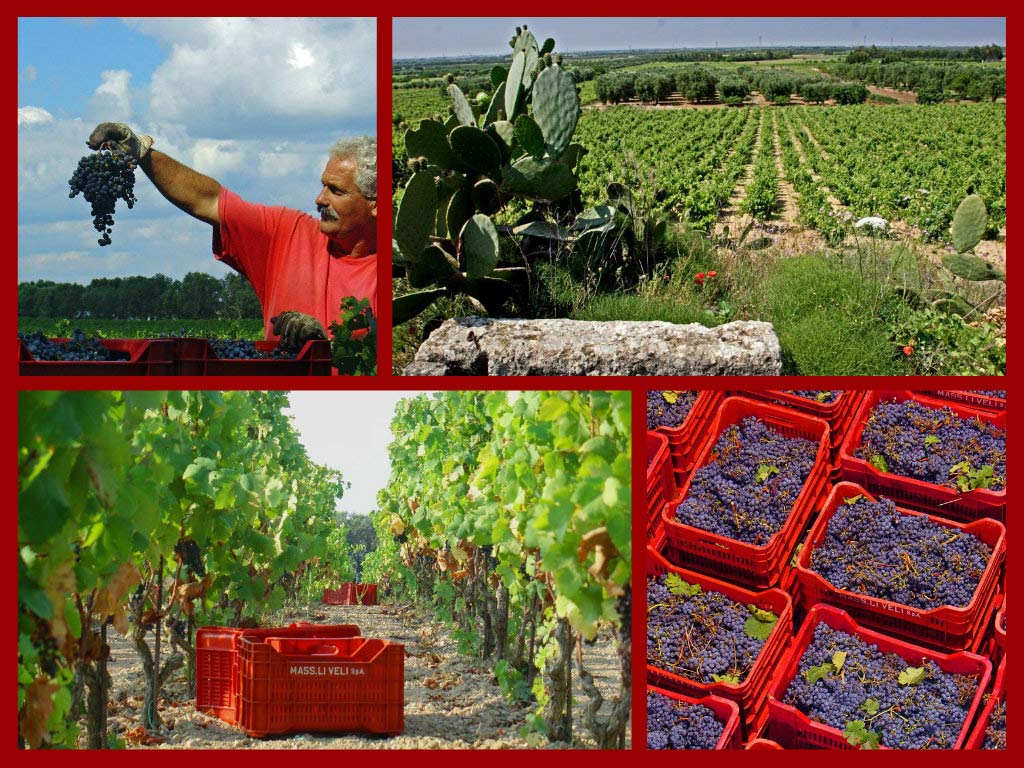MASSERIA LI VELI
In 1999 the Falvo family, with over 40 years of experience in the wine business, purchased and renovated the property to give birth to an ambitious project in Apulia, a region with a long vine-growing tradition.
Masseria Li Veli is located on an ancient Messapian site dominating the fertile and sunny Salento plain. It was founded by the Marquis Antonio de Viti de Marco (1858-1943), an internationally known Italian economist and university professor, Radical Party Deputy of the Reign of Italy, whose ambitious project was to transform the Masseria into a model cellar for the entire South.
Today the beautifully restored Masseria covers an area of 33.000sqm, 3750 of which include offices, a reception area, vinification, storage and ageing cellars.
THE CELLAR
All wines are produced in the large cellar built in a light coloured stone, carparo, similar to the local pietra leccese. Beyond the main entrance is the barrel cellar, protected by a large glass door and located on the ground level beneath groin vaults. An air-conditioning system set at 16° guarantees an ideal temperature.
The total capacity of the cellar is of approximately 10,000 hectoliters, divided between steel vats and about 400 French oak barriques. The ancient storage cellar now houses modern fermentation tanks: eight horizontal submerged cap vats with a capacity of 125 hectoliters and ten vertical vessels with a capacity of 130 hectoliters, which allow pumping over with fractioned and programmed délestage, must aeration, total programme management and traceability of the vinification.
Owing to the high flexibility of these machines the processing phases can be adapted and programmed according to the specific winemaking procedures of the various grape varieties. Bottling and storing of bottles for ageing takes place in the same building, in separate areas.

THE VINEYARDS
The vineyards cover a total area of 33 hectares, mainly cultivated with native alberello trained vines, with three two-bud spurs, at a high density planting (5120 plants per hectare).
The layout is the settonce. This pattern was invented by Roman military engineers who for a long time used the Latin square layout, later adopting the quinconce and finally the settonce (ordo septuncialis). The latter was also represented on a coin as a regular hexagon with six corners and a point in the centre.
Today the settonce layout with the alberello training system offers, more than any other system, an ideal combination of beneficial effects: high planting density, maximum soil exploitation by the vine roots, maximum exposure of foliage to the sun, good circulation of air, vines forming rows in all directions making cultivation easier, maximum equilibrium of plant growth (all plants have the same space, both externally and below ground).
From 2005 all the grapes of our vineyards are produced from organic certified farming. In addition, all the rest of the workings in the cellar are made with a special care for environment, according to international standard control for an Environmental Management System ISO 14001.